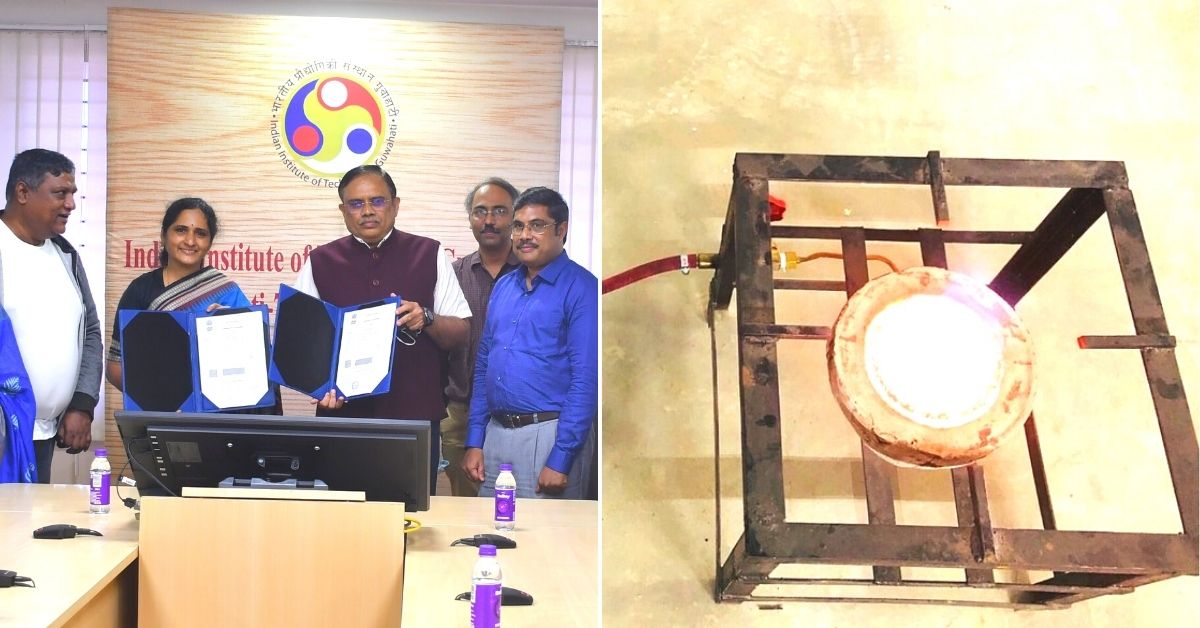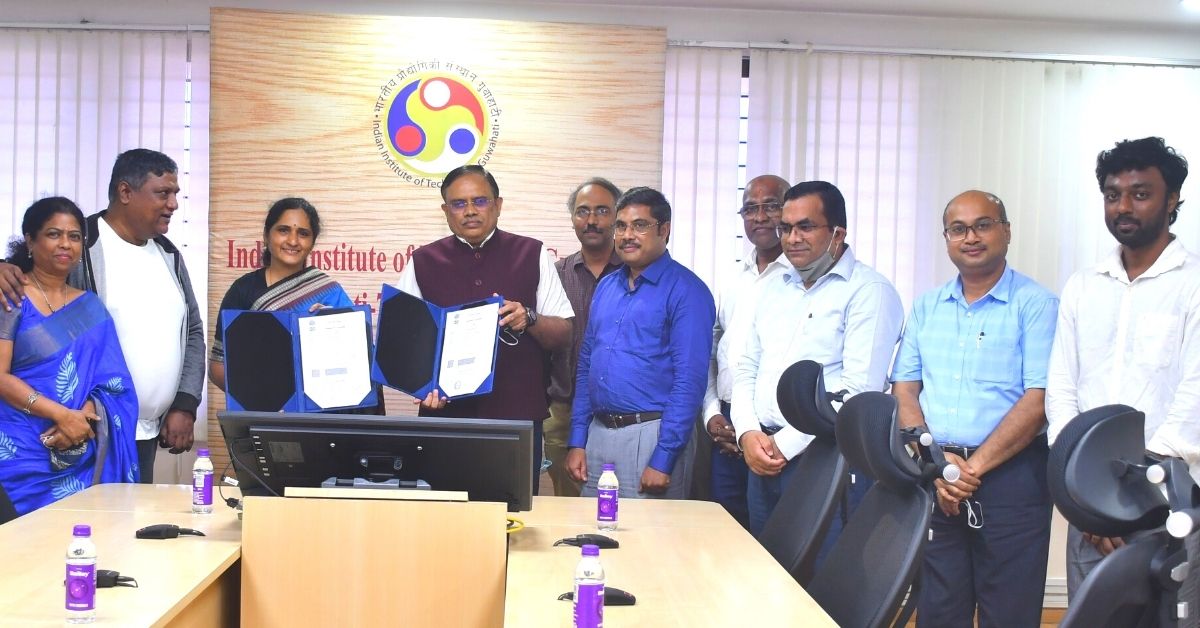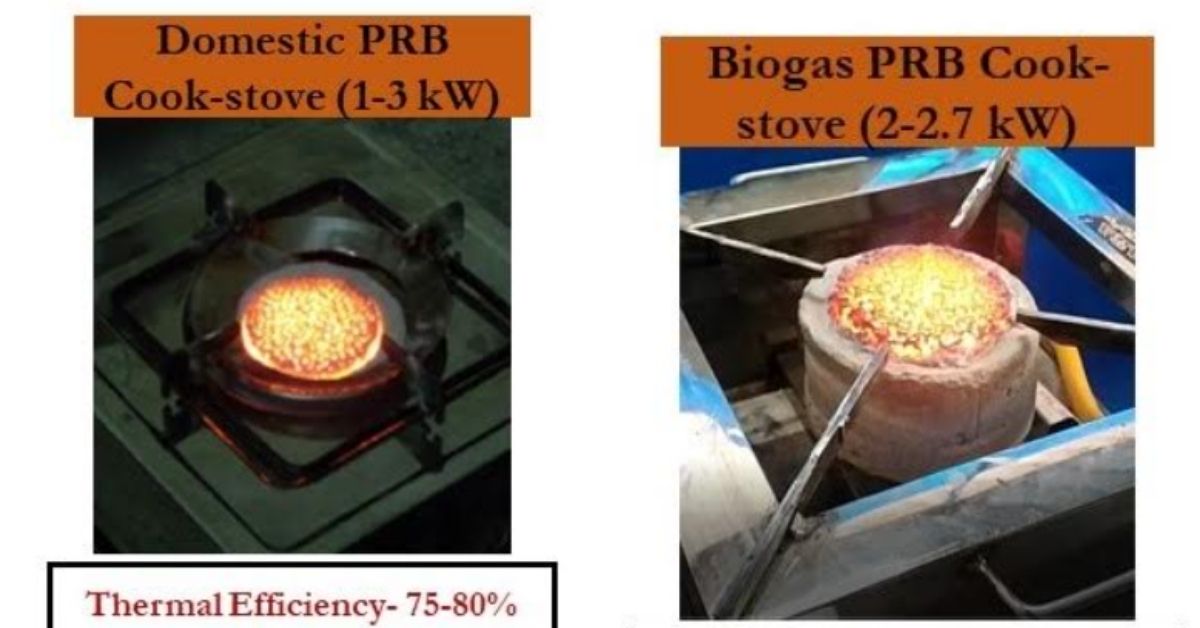IIT-G’s Cooking Stove Saves Fuel Up To 50%, Reduces 80% Emissions
A research team headed by Prof P Muthukumar from the Department of Mechanical Engineering, IIT Guwahati, has developed an “energy-efficient and environment-friendly cook-stove" equipped with Porous Radiant Burners (PRBs).

As of 1 February 2021, there are about 280 million domestic LPG ( liquified petroleum gas) consumers in India, according to Union Minister Dharmendra Pradhan. By March 2022, the Government of India expects that there will be over 300 million consumers. Indian Oil, the country’s largest fuel refiner, claims that it will import 50% more cooking gas to ensure the supply of LPG remains uninterrupted for its bottling plants.
It’s imperative to find heating solutions that are more efficient.
Moreover, the Government of India has been encouraging wider adoption of LPG to replace coal and firewood to improve air quality as well. But according to researchers at IIT-Guwahati, the thermal efficiencies of conventional domestic LPG cooking stoves available in the market are low (60–68%), and emissions are high (CO: 220–550 ppm, NOx: 5–25 ppm).
Responding to this requirement, a research team headed by Prof P Muthukumar from the Department of Mechanical Engineering, IIT Guwahati, has developed an “energy-efficient and environment-friendly cook-stove equipped with Porous Radiant Burners (PRBs), which can provide fuel saving in the range of 25% to 50%, operated with LPG, Biogas and Kerosene”.
“The newly developed self-aspirated LPG domestic cooking stove with two-layer PRB is found to have a maximum thermal efficiency of 80% and minimum emissions of CO (39–64 ppm) and NOx (1–2.5 ppm), which are much lower than its conventional counterpart,” says the professor.
What’s more, this team from IIT-Guwahati has transferred this technology of “energy-efficient and and environment-friendly” PRBs to an industrial partner Agnisumukh Energy Solutions Private Ltd, a Bengaluru-based venture that specialises in cooking applications.
According to the institute, “The commercialisation of PRB-based LPG cookstoves across India will provide a huge LPG saving of about 13 lakh domestic cylinders per day and also will have a global impact on the burner-based applications.” The institute goes on to say “the use of PRB reduces CO and NOx emissions by about 80%, resulting in better indoor air quality”. Besides cooking, this PRB technology can be used for industrial furnaces, cremation, incinerations, etc.
“We started our research on porous medium combustion in 2006 and developed the first working prototype of the PRB with external air supply about two years later. To develop the burner operation in self–aspiration mode, several scientific investigations were carried out. The first version of commercially viable PRB for domestic and commercial cooking applications was developed in 2018. The newly developed PRB is ideally suited for both gaseous fuels like LPG, Biogas, PNG and liquid fuels like Kerosene, Methanol and Ethanol, for domestic as well as community/commercial cooking,” says Professor Muthukumar.

How does it work?
LPG cookstoves available in the Indian market are characterised by Free Flame Combustion (FFC) in which combustion takes place in an open-air environment, and convection is the main mode of heat transfer. In conventional cookstoves, contributions of conduction and radiation from the post flame to pre-flame zone is insignificant. Thus, due to poor heat transport, these cookstoves are less efficient, and they have undesirable features such as low flammability limits, low power density, high level of pollutant emissions, etc. Therefore, as stated above thermal efficiencies for conventional domestic cooking stoves are low and emissions high.
Unlike conventional LPG cooking stoves, the newly developed PRB consisting of two-layer porous matrices works in partially submerged combustion mode, in which the radiation (which travels at speed of light) is the predominant mode of heat transfer from the burner surface to the cooking vessel. In PRB, the alumina (Al2O3) matrix works as the preheating zone (PZ) and the silicon carbide (SiC) foam placed over it works as the combustion zone (CZ).
“The combustion starts at the interface of these two zones and results in a partially submerged combustion mode. Owing to the high surface area to volume ratio, high thermal conductivity and high emissivity of the SiC, some part of the combustion heat is transferred back to PZ for preheating the incoming air-fuel mixture. As a result, the combustion provides improved heat transfer from the burner surface to the cooking vessel. There is no combustion in the PZ region, and the stove is free from any flashback (a condition where gas ignites within the burner),” he explains.

Saving Fuel and Time
Professor Muthukumar goes on to claim that based on the repeated tests conducted at IIT Guwahati and few users, PRB LPG stoves for domestic and commercial cooking applications recorded “fuel saving of about 30% and 50%, respectively, in comparison with their conventional counterparts.” In terms of cooking time for preparing a similar food menu, PRB-based stoves “save about 30% time compared to their conventional stoves”.
Hari Rao, the Chief Executive Officer of Agnisumukh, said, “The Porous Radiant Burner technology will bring back the best practices in thermal management in cooking and industrial applications.”
And yes, IIT Guwahati will get royalty from the sales of these new cooking stoves.
(Edited by Yoshita Rao)
Like this story? Or have something to share? Write to us: [email protected], or connect with us on Facebook and Twitter.
If you found our stories insightful, informative, or even just enjoyable, we invite you to consider making a voluntary payment to support the work we do at The Better India. Your contribution helps us continue producing quality content that educates, inspires, and drives positive change.
Choose one of the payment options below for your contribution-
By paying for the stories you value, you directly contribute to sustaining our efforts focused on making a difference in the world. Together, let’s ensure that impactful stories continue to be told and shared, enriching lives and communities alike.
Thank you for your support. Here are some frequently asked questions you might find helpful to know why you are contributing?


This story made me
-
97
-
121
-
89
-
167











